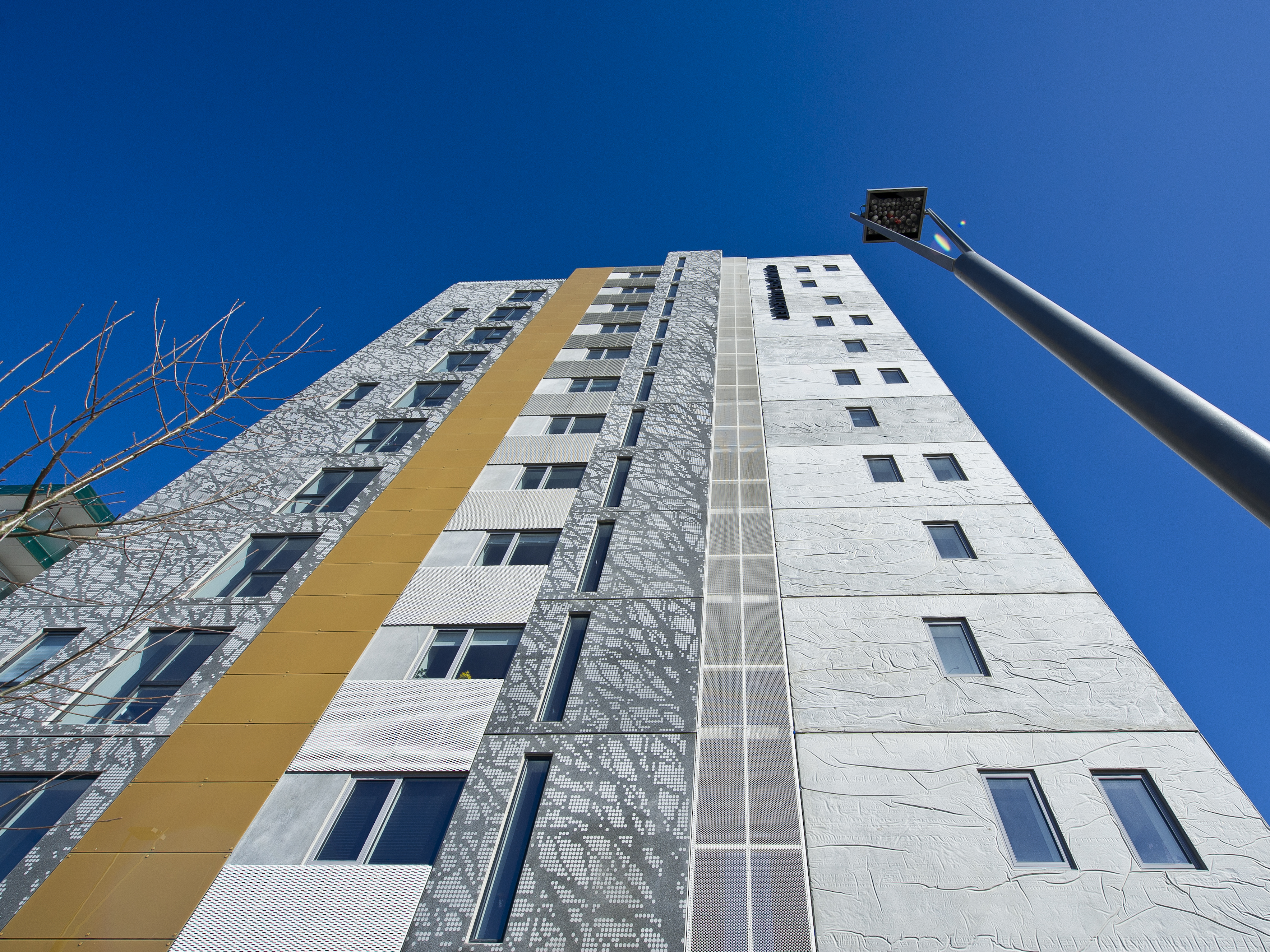Simple technology makes elevators ‘green’
Having a guilty conscience about the climate makes us choose to take the stairs instead of the energy-devouring elevator – at least to a certain extent. This is the conclusion of a research project involving almost 200 residents in a 12-storey building in Aarhus.


It stays remarkably still – the elevator at the Grundfos hall of residence at the Port of Aarhus.
“It’s because electricity is ‘red’,” explains Associate Professor Rune Hylsberg Jacobsen.
When the red lamp lights up in front of the elevator, it is because the available energy has a high carbon dioxide intensity with a deficit of energy from sustainable energy sources.
When the green lamp is showing, it is typically because the wind turbines are hard at work, which means the power has a low carbon dioxide intensity.
The Grundfos hall of residence acts as a full-scale energy laboratory, where researchers from Aarhus University have carried out one of the world’s most radical energy monitoring experiments for a period of three years.
The elevator is used in windy weather
Together with his research colleagues, Associate Professor Jacobsen has been studying the extent to which the energy consumption of a group of residents can be influenced by providing them with information about considerate behaviour and appealing to their conscience.
According to him, the vast majority of new buildings today are constructed according to standards that ensure a very high level of energy efficiency, so it therefore makes good sense to look for the potential for energy savings entirely elsewhere.
“If we want to reduce energy consumption in extremely energy-efficient buildings, there’s no point in looking at whether we can squeeze in an extra layer of insulation. On the contrary, we should be taking an interest in the part of the energy consumption the residents themselves are responsible for. The major challenge is to highlight the consumption and thereby help them to adopt behaviour that’s adapted to a lifestyle with power from sustainable sources,” he explains.
The elevator experiment is the first of its kind to suggest opportunities for influencing power consumption at such a scale as to achieve a better balance with fluctuating energy supplies.
“We’ve studied whether we can motivate the building’s residents to use power when it has a low carbon dioxide intensity, simply by informing them. And it looks promising. If we can get the residents to take the stairs to some extent simply by appealing to their conscience, it looks as though we can also get them to change a considerable number of other habits regarding power consumption,” says Associate Professor Jacobsen.
Facts about energy composition, supply and demand were used by the researchers in the project. They also collaborated with anthropologists on mapping the factors that have an impact on sustainable energy behaviour in humans.
More activity on the stairs
After looking at the use of the stairs during periods when the power supply had a high carbon dioxide intensity causing the red lamps to light up, the overall results of the study imply that the coloured lamps can significantly reduce the use of the elevator in the building.
“The elevator/stairs ratio was clearly affected. Without the lamps, 6.8 people took the elevator for every time one person took the stairs. With the lamps, this was reduced to 5.3 people,” says Associate Professor Jacobsen.
To measure the ratio between the use of the stairs and the elevator by the residents in the high-rise building, the researchers used small sensors on the doors between the stairs on each floor. During the ‘red’ periods, they registered increased activity on the stairs, and this was even higher than they had expected.
An elevator is typically responsible for about five per cent of a building’s total energy consumption, and the small warning lamps can therefore have a relatively large impact on the aggregate level, according to Associate Professor Jacobsen.
“We’ve shown that we can reduce the carbon dioxide-intensive energy consumption in a single building with one elevator only. Looking at this in a larger perspective, it actually has the potential to significantly improve the carbon dioxide score on a world level,” he says.
Contact
Associate Professor Rune Hylsberg Jacobsen
Project background
The elevator experiment is part of the Virtual Power Plant for Smart Grid Ready Buildings project.
